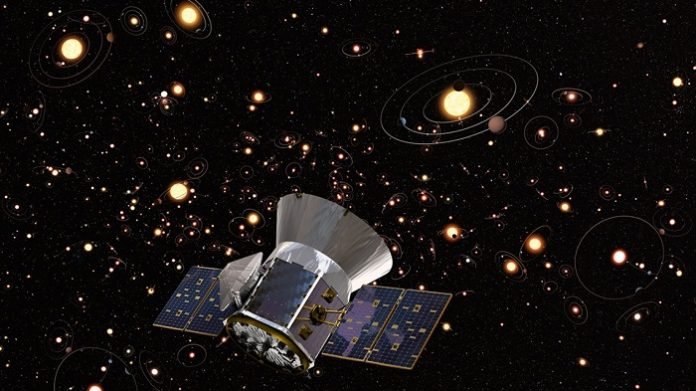
In a new study, researchers identified the most promising target stars for life.
The list is for NASA’s new Transiting Exoplanet Survey Satellite (TESS).
It is designed to ferret out habitable exoplanets and will observe 400,000 stars across the whole sky to catch a glimpse of a planet transiting across the face of its star.
The research was done by a team of astronomers from Cornell University, Lehigh University, and Vanderbilt University.
The catalog includes 1,822 stars for which TESS is sensitive enough to spot Earth-like planets during its mission.
The stars selected for the catalog are bright, cool dwarfs, with temperatures between 2,700 and 5,000 degrees Kelvin. The closest stars are only about 6 light-years from Earth.
For 408 stars among them, TESS can glimpse a planet just as small as Earth, with similar irradiation, in one transit alone.
The team suggests that this catalog is important for TESS to find the closest Earth-analogs.
The catalog also contains a subset of 227 stars for which TESS can not only probe for planets but also for which TESS can also probe out farther.
This will allow scientists to probe potentially habitable worlds around hundreds of cool stars during the TESS mission’s lifetime.
In addition, a total of 137 stars in the catalog are within the continuous viewing zone of NASA’s James Webb Space Telescope, now under construction.
The lead author is Lisa Kaltenegger, professor of astronomy at Cornell, director of Cornell’s Carl Sagan Institute and a member of the TESS science team.
In addition to Kaltenegger, Joshua Pepper of Lehigh University and Keivan Stassun and Ryan Oelkers of Vanderbilt University contributed to the catalog.
The study is published in Astrophysical Journal Letters.
Copyright © 2019 Knowridge Science Report. All rights reserved.



